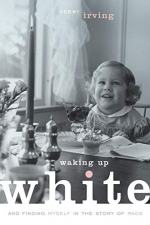
|
| Name: _________________________ | Period: ___________________ |
This test consists of 5 multiple choice questions, 5 short answer questions, and 10 short essay questions.
Multiple Choice Questions
1. How many siblings does Irving have?
(a) 4.
(b) 1.
(c) 3.
(d) 2.
2. Irving describes the limitations of which text in Chapter 14: Zap!?
(a) The Golden Rule.
(b) The Declaration of Independence.
(c) The Bible.
(d) The Farmers' Almanac.
3. Irving states in Chapter 5: Within the Walls, "If I could turn back time and rewrite the script for those years, my parents would be deft at sharing with me the realities of American history, especially" what?
(a) Reconstruction.
(b) The Civil War.
(c) The history of slavery.
(d) The civil rights movement.
4. How many million black American men fought in World War II?
(a) 3.
(b) 9.
(c) 1.
(d) 6.
5. In what year did Irving take the course focused upon within Chapter 6: From Confusion to Shock?
(a) 2003.
(b) 2002.
(c) 2014.
(d) 2009.
Short Answer Questions
1. Irving conceives of tailwinds as forces working toward the efforts of which group?
2. What was the name of the film from which Irving learned about the GI Bill?
3. Around how many Indian boarding schools at one time existed in the United States, all inspired by the Carlisle School?
4. In Chapter 30: My Good People, Irving tries to rectify her concept of herself as a good person with her certainty that she has also been displaying which other quality?
5. In the story Irving uses to open Chapter 1: What Wasn't Said, how old was she at the time?
Short Essay Questions
1. What solution does Irving offer for creating a more complete picture of American history?
2. In what way does Irving use repetition to underscore the importance of her message in Chapter 14: Zap!?
3. Compare and contrast the answer Irving's mother gave her in Chapter 1: What Wasn't Said with the answer Irving believes should have been delivered.
4. What is the motivation for the dominant culture's stance regarding America as either a melting pot or a mosaic?
5. Describe one theme present within the epigraph presented at the beginning of Waking Up White, and Finding Myself in the Story of Race.
6. In what area of the United States and in what kind of dwelling did Irving grow up?
7. What is another term for inattentional blindness and what do the two terms mean?
8. Which movement within history does Irving wish her parents had discussed with her?
9. For what reason does Irving use an allusion to the television show I Love Lucy in Chapter 12: Icebergs?
10. Irving asserts that when which three elements are added together, they equal systemic racism?
|
This section contains 1,033 words (approx. 4 pages at 300 words per page) |

|




